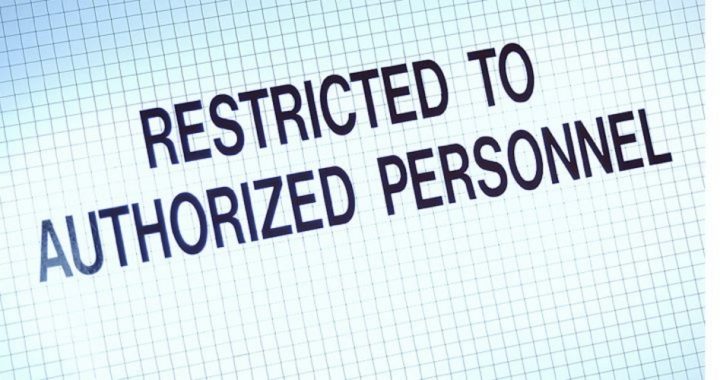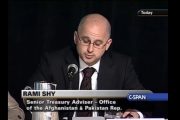
Hillary Clinton has denied from the beginning of her e-mail scandal that she ever “sent or received any e-mail that was deemed classified, that was marked classified” over her private, unsecured server. She has continued to repeat that mantra even as — time and time again — it has been shown to be a lie. Now, federal records show that not only did she both send and receive classified information, some of that information included the names of U.S. intelligence officials that were supposed to be kept secret. Top secret.
As the FBI investigation continues, Clinton has pressed on with her campaign and — much as her former-president husband did in his day — has shown herself to be apparently made of Teflon. As The New American reported Wednesday, Clinton is the self-proclaimed winner of the Democratic nomination. Considering the gravity of the evidence of her crimes revealed by the newly uncovered federal records, the FBI may, at long last, have indisputable reason to bring charges against her, her pending nomination notwithstanding.
As Breitbart reported last week:
Numerous names cited in Clinton’s emails have been redacted in State Department email releases with the classification code “B3 CIA PERS/ORG,” a highly specialized classification that means the information, if released, would violate the Central Intelligence Act of 1949.
The State Department produced a document to Judicial Watch in April 2014 that identifies different types of “(b)(3)” redactions, including “CIA PERS/ORG,” which it defines as information “Specifically exempted from disclosure by statute … Central Intelligence Act of 1949.”
“That’s what it suggests,” Judicial Watch president Tom Fitton told Breitbart News, referring to the indication that Clinton disclosed the names of CIA-protected intelligence sources, based on the B3 redactions.
The CIA justifies “(b)(3)” redactions with this description: “(b)(3) Applies to the Director’s statutory obligations to protect from disclosure intelligence sources and methods, as well as the organization, functions, names, official titles, salaries, or numbers of personnel employed by the Agency, in accord with the National Security Act of 1947 and the CIA Act of 1949, respectively.”
Of course Clinton and her supporters will say that the information was not classified when it was sent and received. That is, of course, true. It is also completely irrelevant. It is not the e-mail itself that would need to be classified; that would happen after the fact. In fact, that has happened. That’s why the names that then-secretary Clinton carelessly exposed in unsecured e-mails were redacted when those same e-mails were released by the State Department.
It is the information in the e-mails that was and is classified. Perhaps an example would would help clarify this. Suppose Clinton had written an e-mail about the location of a secret missile silo in the Nevada dessert and had included the location of that silo, as well as the launch codes. Obviously the message (which did not exist before she wrote it) would not be “marked” classified, unless Clinton herself marked it as such. But the information contained in it and conveyed by it would be. That is no different than what she did by naming secret intelligence officials in an e-mail. They were, after all, secret.
The State Department is treating the e-mails with exactly the opposite care with which they were treated by Clinton. When Breitbart asked about them, the State Department refused to comment except to say, “Per the colleague who handles this issue, we are not speaking to the content of emails.” Let that marinate for a while. The State Department will not even discuss the content of the e-mails that Hillary Clinton sent and received on her private e-mail server because the information in them is protected by the CIA Act of 1949.
Here is an example of what was contained in one of those messages. In late 2011, Douglas Kmiec, who was the former U.S. ambassador to Malta, sent an e-mail to Clinton associate Cheryl Mills about Clinton’s upcoming trip to Malta. In that e-mail, Kmiec named a top defense attaché in Malta. Mills forwarded the e-mail to Clinton’s private e-mail account.
An important point needs to be made at this juncture: The former U.S. ambassador may have violated the chain of custody regarding classified information, the CIA Act of 1949, and several other federal laws that deal with the dissemination of classified intelligence by sending that e-mail. I say “may have,” because his e-mail address is redacted in the released version of the e-mail. He may have used some approved, secured account to send his message or he may not have. That information is not available.
But then Mills forwarded the e-mail to Clinton’s unsecured, private account. At that point, Mills certainly violated the chain of custody regarding classified information, the CIA Act of 1949, and several other federal laws that deal with the dissemination of classified intelligence.
Clinton — as secretary of state — had the legal responsibility to report that crime. Instead, she replied to Mills and copied the message to Huma Abedin. So, by first receiving and not reporting and then by sending that classified intelligence over her unsecured, private account, which was then stored on her unsecured, private e-mail server, Clinton violated those same laws. Having signed non-disclosure agreements (NDAs) in her first days as secretary of state, Clinton was well aware of her responsibility to both protect that information and to report Mills for sending it through unsecured channels.
As The New American reported previously about those NDAs:
The NDA signed by Mrs. Clinton on her second day as secretary of state spells out — in language so clear that the meaning of the word “is” is quite unambiguous — her responsibility in handling the sensitive information to which she would have access in her new job. One part reads, “I have been advised that the unauthorized disclosure, unauthorized retention, or negligent handling of SCI [Sensitive Compartmented Information] by me could cause irreparable injury to the United States or be used to advantage by a foreign nation.” The agreement goes on to address how Secretary Clinton could be sure she was abiding by the letter and the spirit of the agreement. “I understand that it is my responsibility to consult with appropriate management authorities in the Department … in order to ensure that I know whether information or material within my knowledge or control … might be SCI,” the NDA says.
And yet, while the ink of her signature was still wet, Hillary made the decision to re-purpose Bill’s old e-mail server into her own server to be used for official government business. She and her campaign have made much of the fact that she was permitted, by State policy, to operate a private server. Par for the course, though, the fact is conveniently left out that her server was not authorized to contain, store, transmit, or receive classified information.
This is why she denies that she ever “sent or received any e-mail that was deemed classified, that was marked classified.” Because to Hillary it was only classified if it was marked classified and if it was marked so when she sent or received it. The NDA she signed does not accept that elastic definition. Remember, she signed a document agreeing that “I understand that it is my responsibility to consult with appropriate management authorities in the Department … in order to ensure that I know whether information or material within my knowledge or control … might be SCI.” If the only information she had to worry about was that which was marked, there would be no need for Secretary Clinton to “consult with appropriate management authorities in the Department … in order to ensure that [she knew] whether information or material within [her] knowledge or control … might be SCI.”
By including the names of secret intelligence officials in her unsecured e-mails, Clinton removed those names from secured channels and communicated them over unsecured channels. It would be the same thing as taking photographs of classified documents and walking out of the federal archives with them on her camera. And she knew it at the time.
Also from that previous report:
In fact, inherent to her job was the understanding that certain intelligence is “born classified.” In other words, certain information is considered classified by its very nature and the nature of its inception. If she then communicated that information to someone who lacked the appropriate clearance, she would be guilty of violating federal law.
J. William Leonard was the director of the U.S. Information Security Oversight Office from 2002 to 2008. The Washington Free Beacon quotes him — in an interview with Reuters in August — saying, “If a foreign minister just told the secretary of state something in confidence, by U.S. rules that is classified at the moment it’s in U.S. channels and U.S. possession.” So whether or not it was “marked classified,” any such information that Hillary sent or received over her unsecured, unauthorized, private e-mail server would have been a violation of federal law.
Considering that there is now evidence to the fact that she did exactly what Leonard used as an example, it will be interesting to watch Clinton and her supporters try to spin this. Perhaps the FBI will include this tidbit in the list of questions Clinton will be asked. The upcoming presidential race may be historic. One of the candidates may be both a contender and a defendant.




